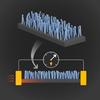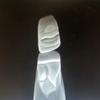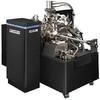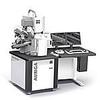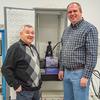Nanostructures are a critical component of innovations in high performance computing, electronics, energy conservation, renewable energy, biomedical research, and health care. We develop and demonstrate metrology techniques to address nanoscale measurement challenges. These techniques include scanning microwave microscopy, atom probe tomography, transmission electron microscopy, Raman spectroscopy, and time-resolved photoluminescence. Our goal is to push these methods beyond comparative measurements by evaluating absolute uncertainties with cross-method comparisons and calibration techniques that reveal systematic errors. We synthesize semiconductor nanostructures to serve both as test structures for measurement techniques and as building blocks for novel metrology tools and semiconductor devices.
News and Updates
Publications
Tools and Instruments
Awards
Press Coverage
TAKING MEASURE BLOG
Contacts
Group Leader and Project Leader Quantitative Imaging
-
(303) 497-5089
Project Leaders (NANOSTRUCTURE SYNTHESIS, CORRELATIVE MICROSCOPY, ATOMIC SCALE CHARACTERIZATION, NANOELECTROMAGNETICS)
-
(303) 497-5069
-
(303) 497-5420
-
(303) 497-5239
-
(303) 497-3997


